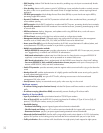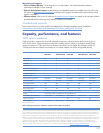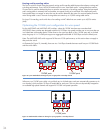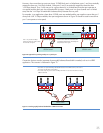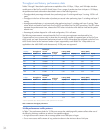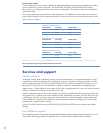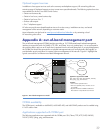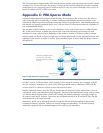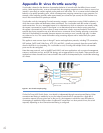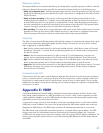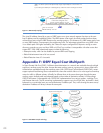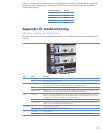
41
The TCAM can support approximately 3,000 data entries that may be used to represent various traffic controls,
including ACLs. For most customers, this quantity of entries will be more than adequate to provide wire-speed
performance for ACL processing. Keep in mind that each ACL entry may consist of multiple criteria, such as a
specific IP address and TCP or UDP port number.
Appendix C: PIM-Sparse Mode
In Protocol Independent Multicast-Sparse Mode (PIM-SM), the assumption is that no hosts want the multicast
traffic unless they ask for it specifically. In contrast, PIM-Dense Mode (PIM-DM) assumes downstream router
membership unless it receives an explicit prune message. PIM-SM is appropriate for wide-scale deployment for
both densely and sparsely populated groups, and is the best choice for all production networks, regardless of
size and membership density.
The operation of PIM-SM centers on the use of a shared tree, with a router functioning as a rendezvous point
(RP), as the root of the tree. A shared tree prevents each router from maintaining source and group state
information for every multicast source. Regardless of the number or location of multicast receivers, multicast
senders register with the RP and send a single copy of multicast data through it to the registered receivers. Also,
regardless of the location or number of sources, group members register to receive data and always receive it
through the RP.
Shared Tree, Multicast Protocol
Very efficient in cases where
there are relatively few multicast
receivers
Multicast source
Multicast receiver
Rendezvous point
Figure C-1: PIM: Shared Tree example topology
In order to receive a multicast stream, routers explicitly join the stream by sending “join” messages to the RP.
This join message is analogous to a unicast router following a default route to a destination. Effectively, the
function of the RP is a place for multicast sources and receivers to meet.
PIM-SM is extremely memory and CPU efficient. Because the only thing most routers need to know is how to
reach the RP, memory requirements are reduced greatly. There are several methods that can be used by routers
in a PIM-SM domain to learn where to find the RP. Probably the simplest mechanism is statically configuring
all routers to reach the RP. However, if the routers are configured statically to an RP and the RP fails, then the
multicast network is no longer functional.
Alternatively, the RP can be learned dynamically through the PIM-SM bootstrap mechanism. Because this
bootstrap mechanism is dynamic, it allows for network changes and redundancy. The PIM-SM bootstrap
mechanism is generally the recommended approach for simplicity and redundancy.



